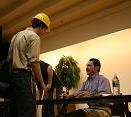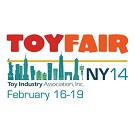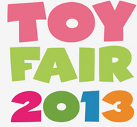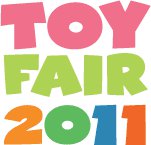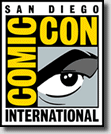| Williams Planets Pinball - partial playfield restoration | |
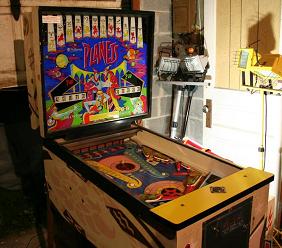
|
|
I felt it was time to put up a photo series about a partial playfield restoration of one of the Preserve Pinball machines.
In this series, I only show one small part of playfield disassembly, cleaning, and rebuild. Of course there are a growing
number of talented enthusiasts who do this sort of work, and everyone has their different techniques and methods. Certainly
with each project I work on I pick up a few extra tricks and processes as well. What follows then is my approach to the
top side of pinball repair. Even more technical and interesting, of course, are the switch stacks and logic that make
the device work, but hopefully that will be covered in later articles. What I find to be particularly interesting
about this machine is that it is apparently the made-for-Italy version of Zodiac, about which little is known. As such,
working on it feels somewhat like performing pinball archeology, as I try to keep track of any parts used in its upkeep
which would give a clue as to its history. Let's begin.
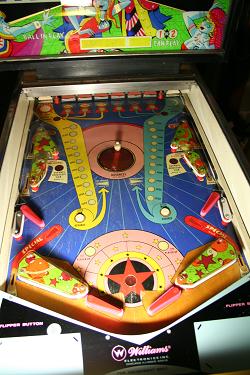 I have already done work on this playfield, and have one major area left to clean. It is a symmetrical playfield, and you can see the top right slingshot is shiny, while the top left one is dingy. Let's make them match! 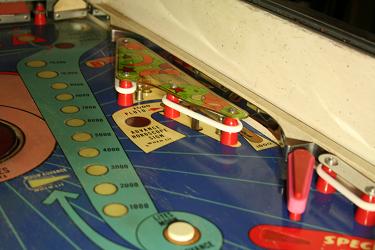
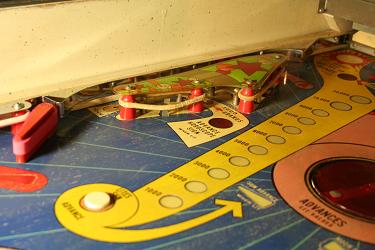 This is the condition that the entire playfield was in originally. As expected, the rubber ring is beat up, stretched and dirty. There is also a layer of grit on the playfield, which, if played further, would contribute to rapid playfield deterioration. The playfield elements are held down with single screws which secure the playfield plastics as well as the structural posts at once. This makes things harder to work on, and is generally not as thoughtful a design as the two stage post and cap design that Gottlieb often uses. Just something else to be careful about! We start by removing the four screws that hold down the decorative plastic. Since the rings are fatigued we don't have to worry so much about the posts being ripped up by the rubber ring tension, once the screws are loose. This only becomes dangerous when we're rebuilding this element. 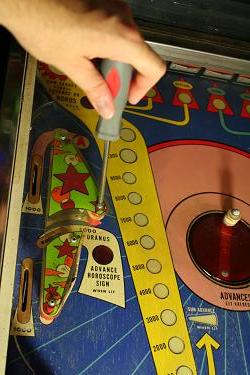
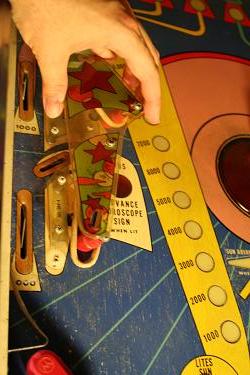 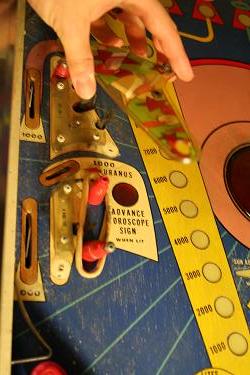
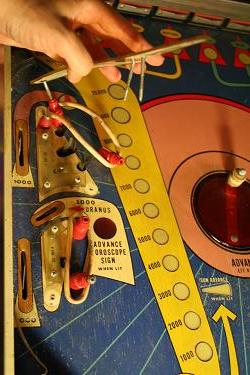 As I remove the parts I want to keep them somewhat organized for cleaning and reassembly. This is in no way a complicated component, especially compared to newer machines, but making good habits will help later on with bigger projects. 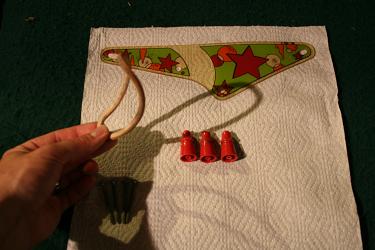 Underneath the decorative plastic shield, and once the main four posts have been removed, there are two sub-level plastic components. These serve as ball guides around the channel behind the upper slingshot. Perhaps they are hard plastic in an effort to speed up the ball action in this feature. There is also a fifth red post, which lives underneath the printed top plastic. It has a shorter screw and the post itself is very slightly shorter. It will be outfitted with a single small rubber ring, which appears to not have been installed as of the disassembly. 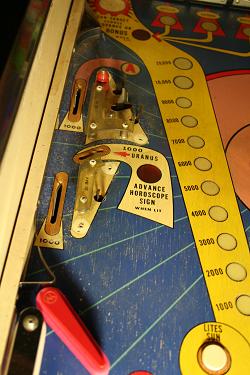
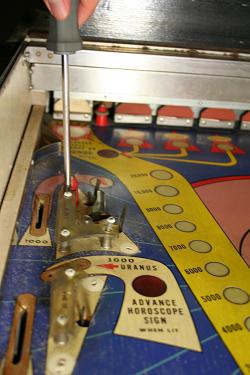 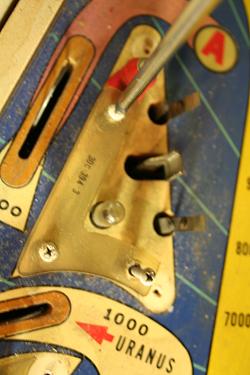
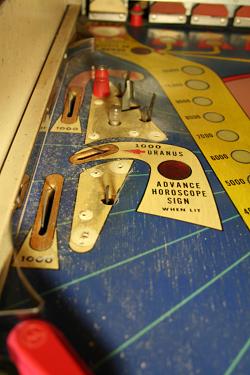 I found it interesting that the one bulb that required changing as part of this section of the restoration was actually a #47 bulb, which possibly indicates that it had been changed somewhat recently, or at least since it was made!. Also it was replaced using the 'best practice' suggestion of the #47 which runs slightly cooler and slightly dimmer, rather than the factory #44 bulbs. I have so far seen a mix of #44 and #47 bulbs in this machine, leading me to believe the 44s were installed in the factory, and 47s were the result of maintenance in the recent past. 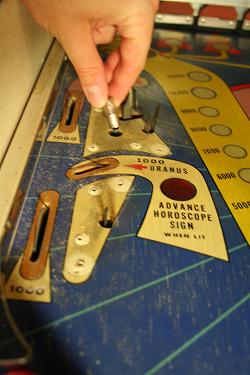
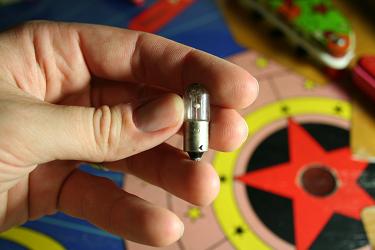 Here are the parts we removed from our section of playfield. They are all fairly filthy, but we'll get back to them later. 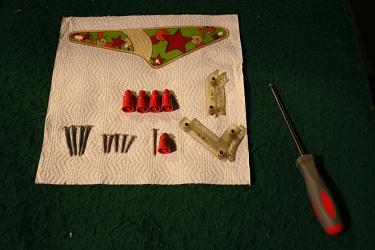 First we will address the playfield, and the dirt and grit thereon. 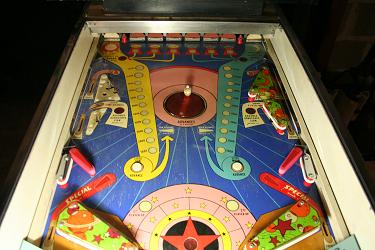 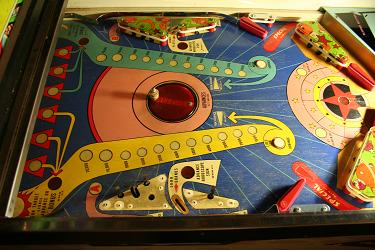
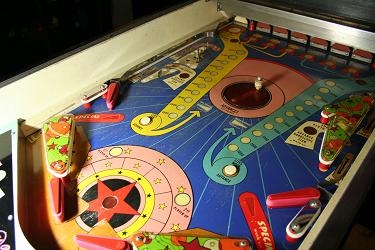 When I began my pinball restoration career I used Millwax on the playfields and parts. I've since started using the Novus family of products, as they have been more often recommended by people who know. 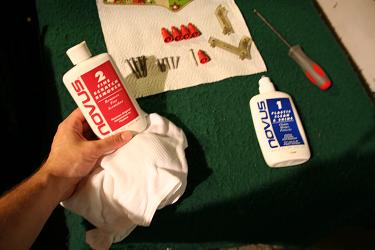
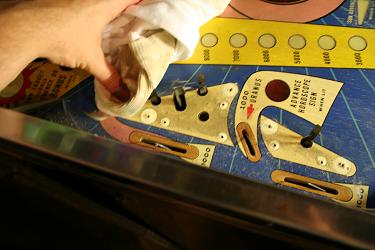 One of the things I find to rewarding about this part of the process is seeing the colors and quality of the original playfield start to emerge. The parts of the painted wood that were shielded from the ball motion over the many years of use, once cleared of their caked on nicotine and electrical stack dust, shine nearly like the day they were made. 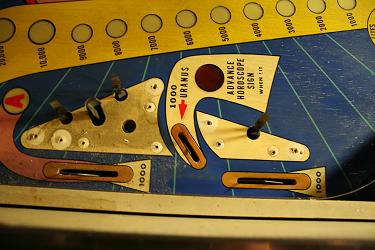
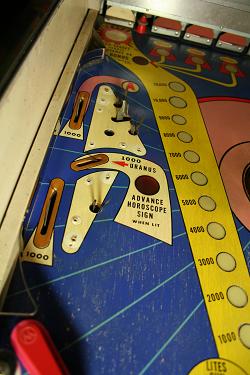 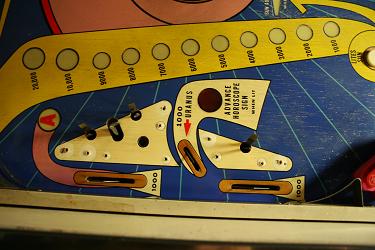 Now that we have gotten the playfield sorted out, it's time to clean the individual parts. I still have yet to acquire a Berry Tumbler for polishing screws and the like, similar to what Burt Gummer is running in the rec room in Tremors 1, which summons the Graboid that busts through his wall. 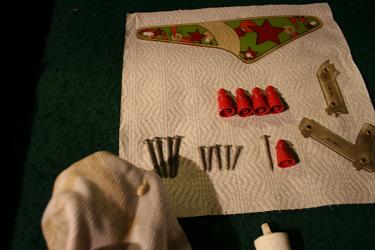
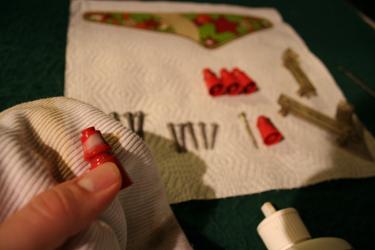 Hand cleaning each screw is even more important for this game, as the tops of the screws are visible through the tops of the playfield plastics. I found that the screws for the second level of plastic, under the screen printed ones, were especially corroded to the point of being white and 'fuzzy' but they cleaned up amazingly well. 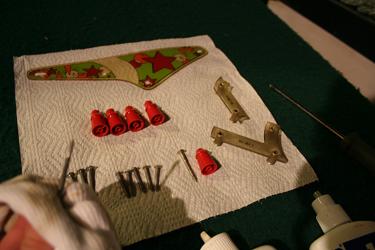
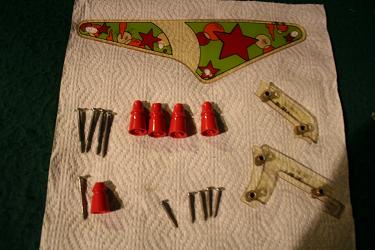 Now it's time to replace our single light bulb with a nice new #47. Provided the socket is ok, which I believe this one to be, this is all we really need to do for this step. 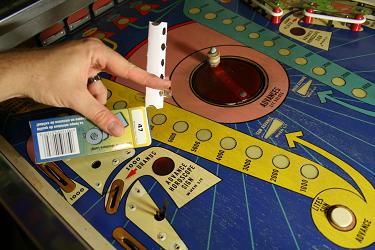
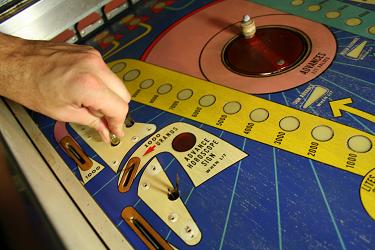 Now we can reassemble our second layer plastic pieces, as well as the red post that doesn't connect to the top plastic. I also figured that I should give the switches a quick touch of the flexstone to insure good contact. 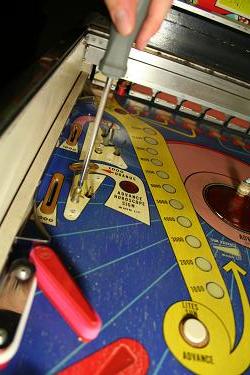
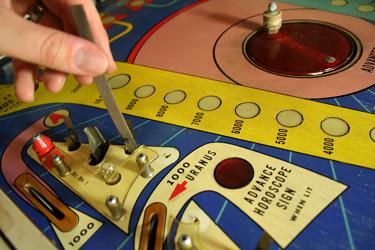 Before we reassemble the top-level things, it's time to dig into our ring kit from Pinball Resource and select what we need. 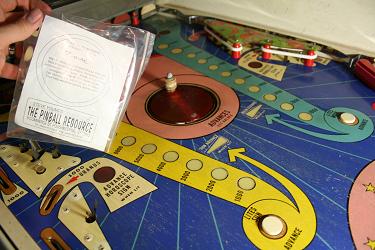 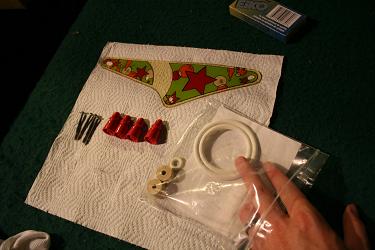
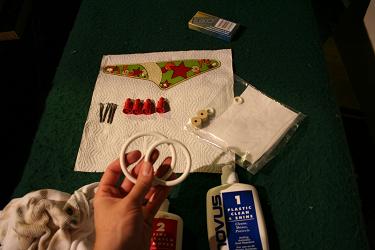 Now we have a pretty slick looking partial reassembly. 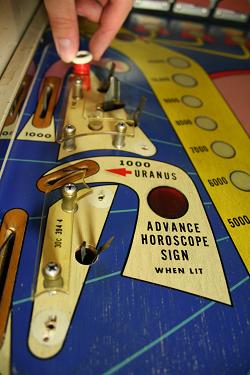
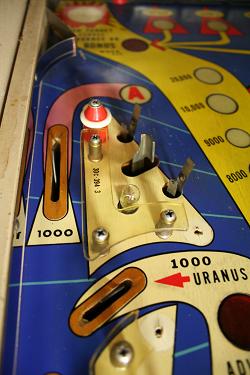 Let's move on to the top level playfield plastic, and the two larger rubber rings. As was mentioned earlier, due to William's decision on how to construct their playfield, getting the posts screwed back into the wood, with the tension of a new rubber ring, without breaking the plastic or the screw hole, is a challenge. I'm trying a new technique today which is to only loop the ring around one post, screw it down tight, then do some jiggery-pokery to get the second ring set without breaking stuff - a challenge! 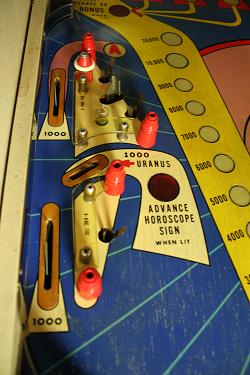
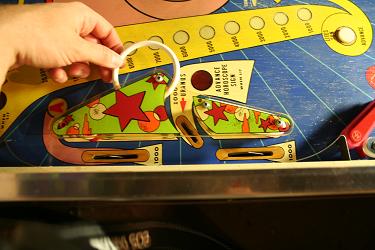 After a sufficient amount of wrangling, the reassembly is complete! 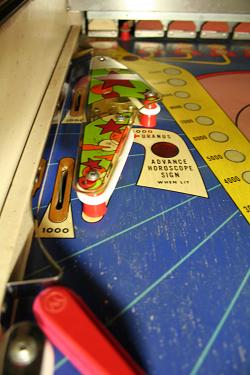
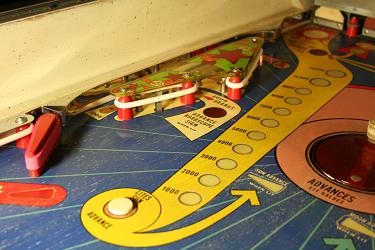 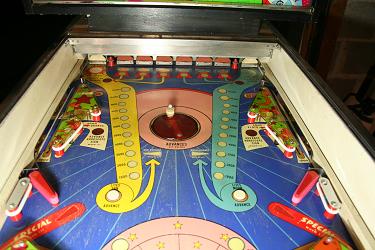 That is my process of playfield restoration - simply extend that to a full playfield and there you have it! |
|

|

|
|||||||||||||||||||||||||||||||||||||||||||||||||||||||||||||||||||||||||||||||||||||||||||||||||||||||||||||||||||||||||||||||||||||||||||||||||||||||||||||||||||||||||||||||||||||||||
|
|
|||||||||||||||||||||||||||||||||||||||||||||||||||||||||||||||||||||||||||||||||||||||||||||||||||||||||||||||||||||||||||||||||||||||||||||||||||||||||||||||||||||||||||||||||||||||||
| © 2025 ParryGamePreserve |
